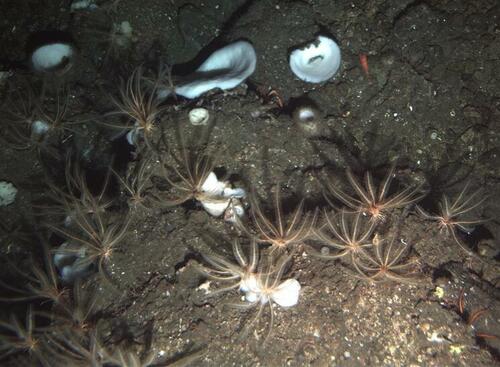
America Must Lead On Seafloor Mineral Development
Authored by Alina Voss via RealClearEnergy,
An untapped energy savior might just be sitting on the ocean floor. From AI to defense to clean energy, critical minerals remain pivotal to securing the United States’ competitive edge. Unfortunately, supply chains remain precariously dependent on foreign control, often from adversarial nations like China, leaving the country vulnerable to price shocks, trade restrictions, and supply disruption. While bipartisan efforts are gathering momentum around ideas to strengthen U.S. mineral security through efforts like reviving domestic mining, strategic alliances, and even recycling programs, land-based deposits alone may not be enough to meet the explosive growth in demand anticipated over the coming decades. We may need to look deeper for solutions, specifically to the ocean floor.

Polymetallic nodules, potato-sized rocks found scattered across the seafloor, particularly in the Clarion-Clipperton Zone (CCZ), between Hawaii and Mexico. These nodules are rich in four of the same minerals needed to fuel clean energy supply chains: nickel, cobalt, copper, and manganese. Unlike terrestrial sources, which often contain only one or two of these metals and require energy-intensive processing, seafloor nodules contain all four in high purity and are loosely embedded in sediment, meaning they can be collected with minimal crushing or waste rock removal. The CCZ alone is estimated to hold more nickel and cobalt than all known land-based reserves combined. They represent a rare convergence between vast untapped mineral resources and emerging technology in deep sea robotics and AI-powered collection technologies. If harnessed responsibly, it could prove determinative for the future of American clean energy security.
To catalyze the emergence of a domestic seafloor minerals industry, federal support should mirror successful precedents in space and semiconductor policy (like the COTS program or CHIPS act) by leveraging targeted public-private partnerships, milestone-based R&D funding, and interagency coordination. These mechanisms align well with President Trump’s broader industrial strategy, especially his second-term push to reassert American leadership in critical technologies. The development of deep-sea collection systems requires the same precision robotics, long-duration autonomy, and AI-driven sensor fusion technologies now prioritized in Trump’s Executive Orders on domestic energy dominance, which already task agencies like DOE, DARPA, and NSF with advancing advanced manufacturing and next-gen energy. The seafloor minerals sector presents an ideal testbed to apply those mandates, driving innovation while securing access to four of the most strategically important metals for both defense and clean tech. As the administration reforms permitting timelines, retools the Department of Energy’s innovation programs, and expands national security-driven procurement, now is the moment to integrate seafloor minerals into America’s critical mineral toolkit.
Despite the opportunities for seafloor minerals to bolster American environmental impacts through advancing clean energy, a wave of critique has arisen, largely arguing that using seafloor minerals will have negative environmental impacts. Claims that seafloor nodule collection could impede the ocean’s ability to store carbon dioxide continue to circulate, despite little evidence. Not to mention, experts say that this alarmism neglects the counterfactual that the amount of carbon dioxide released by seafloor mineral collection is “negligibly tiny” when compared with emissions of on-land mining activities.
Letting geopolitical rivals lead on nodule development or critical minerals more broadly is a strategic mistake both for U.S. supply chain and environmental policy. The short window of opportunity, particularly for the Trump administration, to shape the critical mineral industry for the better is a make-or-break moment in gaining the technological edge for the coming decades of American industry. The U.S. should take swift, targeted action by forging strategic alliances with allies like Japan and Australia to coordinate exploration, recognizing nodules as “domestic content” when first landed in the U.S., unlocking manufacturing incentives, and finally by expanding federal R&D and streamlining permitting.
The United States has a rare opportunity to secure not only the security of its supply chains but also the future of its clean energy industry by responsibly advancing seafloor mineral development. With strategic investment, smart regulation, and proactive utilization of the resources available to us, America can shape the rules of the game while securing access to the critical materials that power 21st-century technologies.
Alina Voss is a fellow with ConservAmerica.
Tyler Durden
Wed, 07/09/2025 – 18:25


















